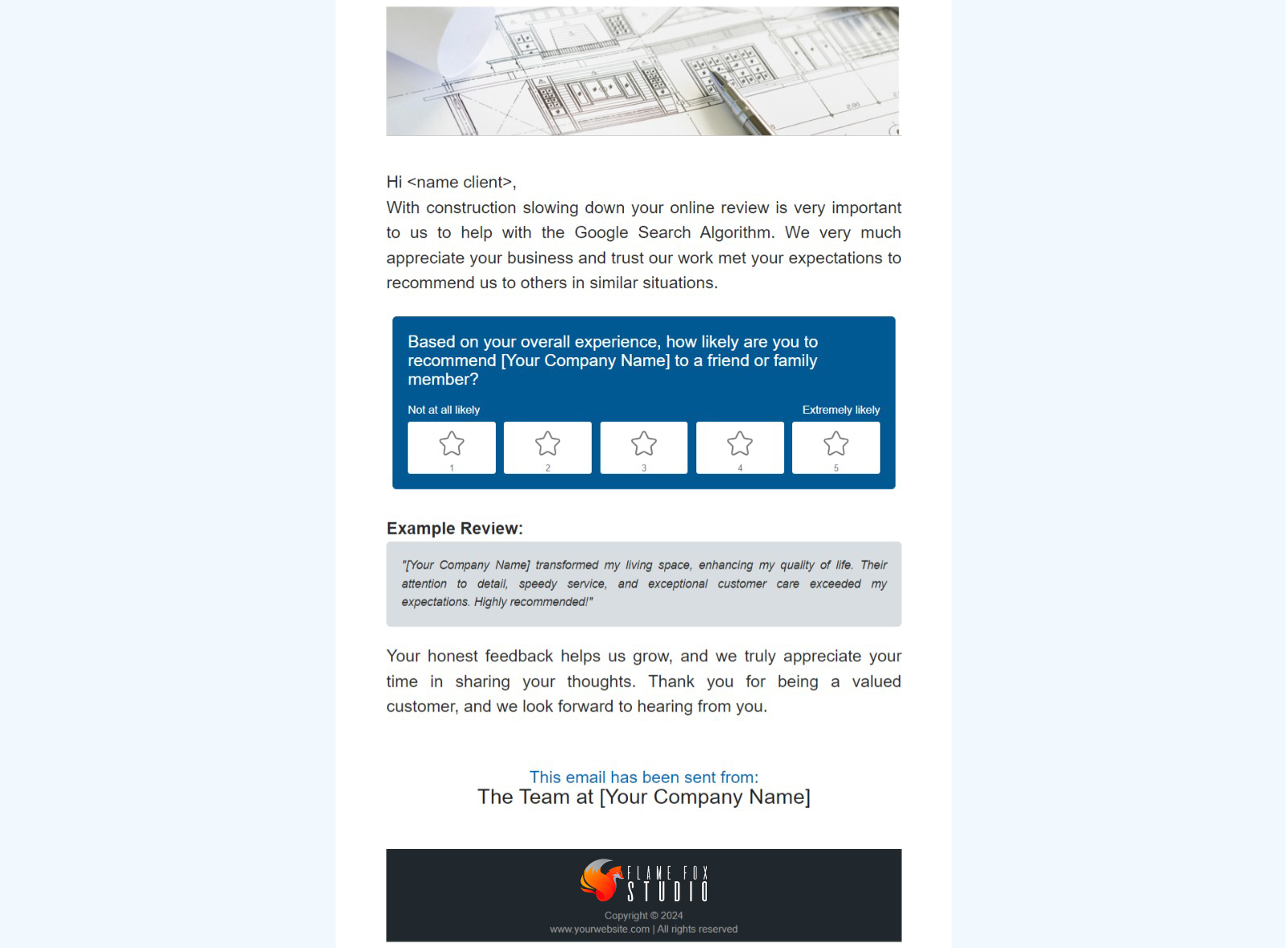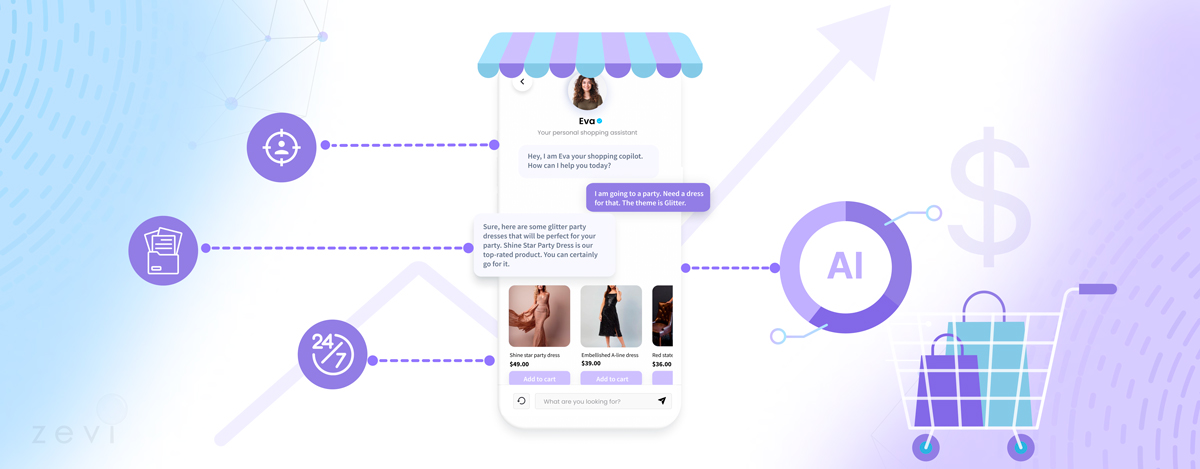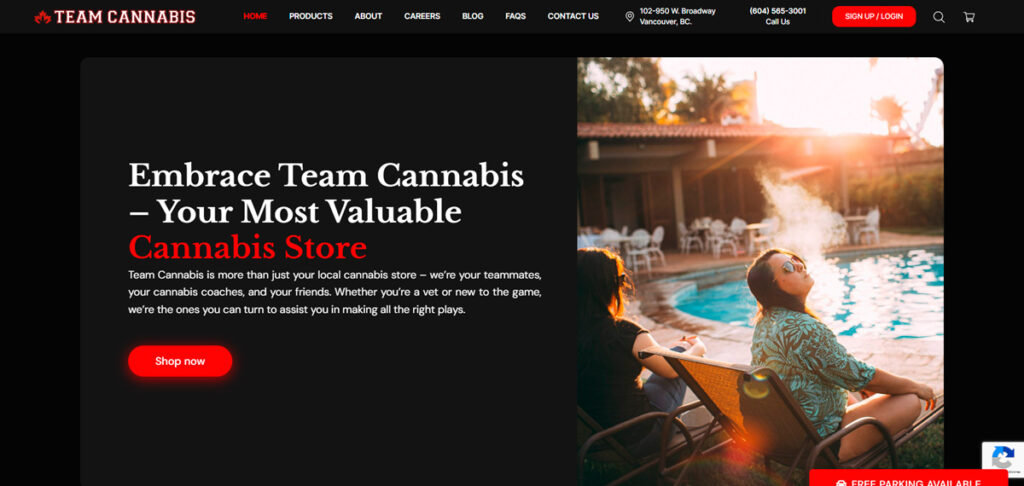Staying abreast of consumer trends is pivotal for crafting effective marketing and advertising strategies. Yet, diving into the latest trends can be daunting if you’re not well-versed in the current landscape.
Fortunately, recent industry and consumer data provide valuable insights into anticipated consumer behavior in 2024. From this wealth of information, we’ve compiled a list of 8 key consumer trends for 2024. This compilation serves as a guide to inform and enrich your marketing strategy for the year ahead.
1. Customer feedback matters
Seeking feedback from customers becomes truly impactful when you take actionable steps based on their insights. A major consumer trend for 2025 emphasizes the significance of actively listening to customers and implementing feedback promptly and effectively.
The process of collecting feedback can be as straightforward as sending an email:

Ensuring that customers feel heard is crucial, as they constitute the heartbeat of your business. A study revealed that 63% of consumers believe businesses should improve in listening to customer and client feedback.
Initiate this process by promptly responding to customers when they share their experiences with your website, products, services, or any aspect of your business. Acknowledging customers is fundamental, expressing gratitude for positive feedback and encouraging their continued support. In cases where issues arise, actively inquire about how you can address their concerns, not only to resolve their current situation but also to enhance the experience for them and future customers.
2. Branding and personality are crucial
Customers seek assurance that the businesses and brands they patronize are driven by real people. Establishing genuine connections with your audience is pivotal for nurturing leads and fostering long-term, loyal customer relationships.
Embrace the opportunity to infuse your brand content, whether on social media, emails, website materials, or any customer-facing platform, with a touch of personality. Balancing professionalism with a dash of fun in your written content can humanize your brand.
Even in a professional tone, consider incorporating more casual language to demonstrate your brand’s relatability. For service-oriented brands, emphasizing empathy and understanding in customer interactions, both pre and post-sales, is crucial. A survey highlighted that 36% of consumers expressed dissatisfaction with the perceived lack of empathy during customer service interactions.
Remember, it’s perfectly acceptable to inject a bit of informality. Showing your human side and genuine care for customers can significantly contribute to their loyalty. A touch of humanity and personality can serve as a compelling factor that encourages repeat business and customer loyalty.
3. 24/7 support is a must
In essence, the key consumer insight for 2025 revolves around delivering high-quality shopping experiences. Achieving this involves providing round-the-clock support and customer service to online users.
You can extend support through various channels, such as chatbots, email, and providing content to address common queries:

According to a survey encompassing 1000 respondents, an overwhelming 93% expressed that they would exhibit greater patience towards shipping delays if the company they ordered from was recognized for exceptional customer service. Moreover, 45% indicated their willingness to wait up to two weeks for delivery under the condition of receiving outstanding customer service.
While maintaining a human customer service team around the clock may not be feasible, there are alternative methods to provide support to your website users even when direct assistance is unavailable.
Chatbots can also help assist customers (and your business) by:
- Providing consistent customer service, 24/7
- Answering FAQs
- Saving you money
- Gathering customer feedback
- Providing multilingual support, assisting all customers
4. Omnichannel shopping opportunities keep growing
Consumers are increasingly seeking expanded opportunities for omnichannel shopping, leveraging in-store, social, and online resources to shape their purchasing decisions.
Consider this: How often have you felt more confident making an online purchase knowing you could easily return it to a physical store, or vice versa? The desire for convenient access to purchases underscores the importance of establishing multiple points of purchase.
The omnichannel landscape has been significantly influenced by social media shopping. In the past, options were limited to ecommerce and in-store experiences. Now, users can seamlessly shop through platforms like TikTok, Instagram, and Facebook.
To stay ahead of this trend in 2024, explore the social media platforms you already engage with and understand how they contribute to the evolving omnichannel shopping experience.

5. Consumers have more purchasing power
The upcoming marketing trend for 2024 revolves around the increased autonomy that consumers wield in their purchasing decisions. Unlike previous years, consumers now exert more control over what and when they choose to make a purchase. They are less susceptible to external influences and have a plethora of options for fulfilling their needs.
To enhance sales success, it is crucial to cater to this individual empowerment. Showcase the value your product brings to customers, exercising patience and consistency in your approach. Emphasize the quality of your offering, and transparently communicate the perks and benefits associated with it.
6. Personalization is expected
We’re all familiar with personalized ads as we browse and scroll. Your company might not consider these ads as the most effective way to reach people. But did you know that 75% of consumers expect personalization to make navigation easier both in-store and online?
Personalization helps to:
- Suggest only relevant products and services to customers
- Prevent companies from wasting money on ineffective ads
- Encourage brand and product exposure across the web
Knowing that consumers want and expect personalization, you can start leaning into data collecting strategies and customer segmentation — the latter we’ll talk about later.
7. Segmentation help everyone fit in
People crave a sense of belonging. Clearly and proudly segmenting your audience can play a crucial role in fostering this feeling of grouping and belonging.
While segmentation itself is not a new trend — marketing professionals have been categorizing audiences for years — the concept that segmentation aids people in finding their niche is gaining traction. By grouping individuals based on shared interests, hobbies, and preferences, you can enhance the effectiveness of your marketing efforts.
Consider tailoring your ads to resonate with different groups and explore ways to market to these shared interests. For instance, you could launch a TikTok ad campaign specifically targeting Gen Z users with a passion for hiking and camping!
8. AI is helpful for companies, but consumers are skeptical
Numerous companies have seamlessly integrated AI into their daily operations, leveraging its capabilities for tasks ranging from crafting product descriptions to devising comprehensive campaigns. AI proves instrumental in achieving greater efficiency and effectively targeting consumers.
Conversely, consumer skepticism towards AI prevails, with 52% of Americans expressing more apprehension than enthusiasm about AI in their daily lives. Much of this concern revolves around privacy and security issues rather than the potential discovery of new products or services through AI.
For businesses utilizing AI in their backend processes, a heightened focus on security is imperative, and transparency becomes key. Given the prevailing negative public sentiment towards AI, openly communicating the security measures in place can alleviate apprehensions and mitigate distrust.
Acknowledging that not everyone is certain about the impact of AI, fostering a positive user experience can contribute to instilling confidence in consumers regarding your company’s use of AI in the future.






